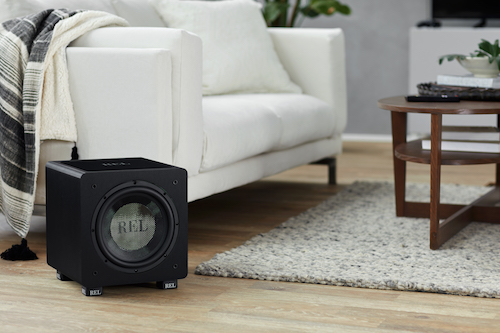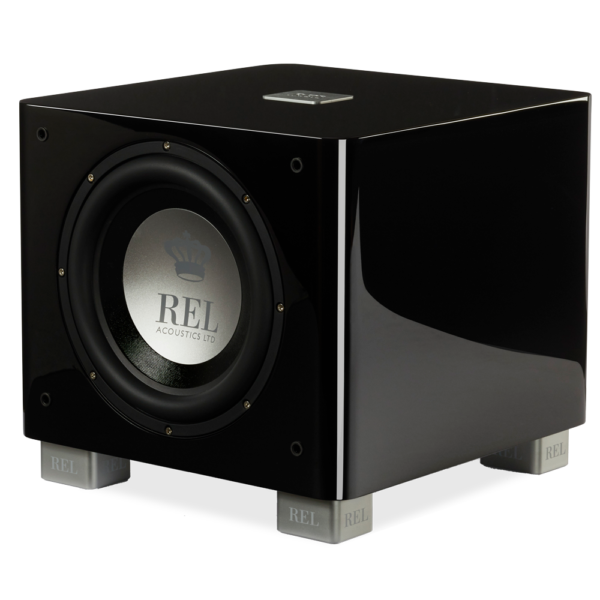Blog
Building A REL 3D System
Pairing Serie HT With Additional RELs
 Before we jump into today’s topic, adding a model HT to an existing REL system, it seems useful to clearly identify what HT is designed to do and what it is not designed to do. HT is designed explicitly to provide the kind of gut thumping, foundation-rattling explosive dynamics necessary for state of the art home theater. And at budget pricing.
Before we jump into today’s topic, adding a model HT to an existing REL system, it seems useful to clearly identify what HT is designed to do and what it is not designed to do. HT is designed explicitly to provide the kind of gut thumping, foundation-rattling explosive dynamics necessary for state of the art home theater. And at budget pricing.
Is it a replacement for our traditional offerings? Not at all. By concentrating on one specific performance attribute – high output home theater – it allows us to deliver exactly what that genre (the .1 effects channel that digital home theater demands) at a far lower cost than if we were to deliver all the various facets of excellent performance that RELs have traditionally offered. If REL has traditionally offered the all-around performance of a high end European sports car, the HT is a nitro-fueled big block dragster. Sometimes you show up at a racetrack and you need a dragster.
For those of us who know and love RELs, inviting HT into the fold can seem at times like we are being asked to embrace some non-REL virtues. REL devotees may worry that by embracing HT, REL might abandon its strengths.
Relax, in HT, we’ve delivered narrow-focus pure high output theatre subwoofers precisely by highlighting traditional REL values and approaches: light weight, maximum stiffness, and fast attack. The CarbonGlas™ drivers we developed are masterpieces of cost-effective, lightweight, stiff and well-damped dollops of sheer REL-ness. Where traditional theater woofers can wallow around like water buffalo in a mud hole, HT replaces this with a vivacious swagger that is the essence of professional theater-grade bass.
Nowhere is this more apparent than when adding one or more (hey, big systems need multiple subwoofers) HT’s to an all-out assault REL 3-D theater. In a REL 3-D system, all of the virtues of traditional REL bass theory are present. High Level Connectivity transforms normally limited speakers into full range fire breathing dragons; while concurrently using HT connected to the .1/LFE input allows the effects the director envisioned to add a special emphasis to scenes large and small (check out the use of the increasingly panicked heartbeat in the classic ‘90’s movie The Professional, or Leon in various parts of the world, starring a 14-year-old Natalie Portman making her big screen debut). The opening scene features a dirt bag cocaine dealer whom the lead character (Jean Reno), a contract hitman, has been retained to put the fear of God into. As the hitman removes one after another of the dealer’s posse with clinical dispatch, the .1/LFE channel is used to transmit an increasing level of fear-rising-to-terror via the heartbeat in the soundtrack. As the Low Frequency Effects channel increases in frequency and loudness, the fear and tension in the scene grows exponentially.
Upgrading an already great REL 3D theater using the new HT instantly reveals the strengths of the new range. Pure, purpose-built LFE channel bass can be delivered at crushing sound levels, adding obvious upgrades to the experience for very little money precisely because they are not tasked with delivering all the very complex difficult assignments that classic RELs must. Thus, the leading edge attack that is faster than a super speaker from, say, a G-1MKII need not be delivered by an HT model. The beautiful and almost impossible to execute decay patterns as a note descends into echoing silence in a large hall is not present in a pure theater woofer. Neither do we supply the incredibly fast and expensive High Level filters of traditional RELs. Why? Because if you want that, we already build it in nine different forms that cover the entire range of possibilities. A great number of reviewers say that we do so better than anyone.
And then there is this…
An awful lot of people each year go out to purchase a new home theater. By the standards of the very high end systems we often find ourselves involved with, these systems are modest. Most often, they consist of an AV receiver from a Japanese engineering team. Five or more decent (to very fine) value loudspeakers the sum total of which likely cost less than a single tweeter used on a super speaker costing hundreds of thousands of pounds/dollars/euro/shekels, etc. And often, this is paired with a fairly mundane subwoofer of no particular distinction. It is often designed by the most junior of loudspeaker engineers because, being junior, he or she hasn’t earned the right to work on a “real” speaker yet.
We thought, don’t those nice people deserve a REL in their lives too? In doing so, we had to make careful decisions about what we, or rather this customer, could do without. And we created HT, so that people wanting a simple, high quality home theater could have something that they could purchase and take pride in, knowing that engineers who care a very great deal about bass and take great pride in creating the finest products of their kind in the known galaxy had taken time to create something simple, affordable and high performance.










